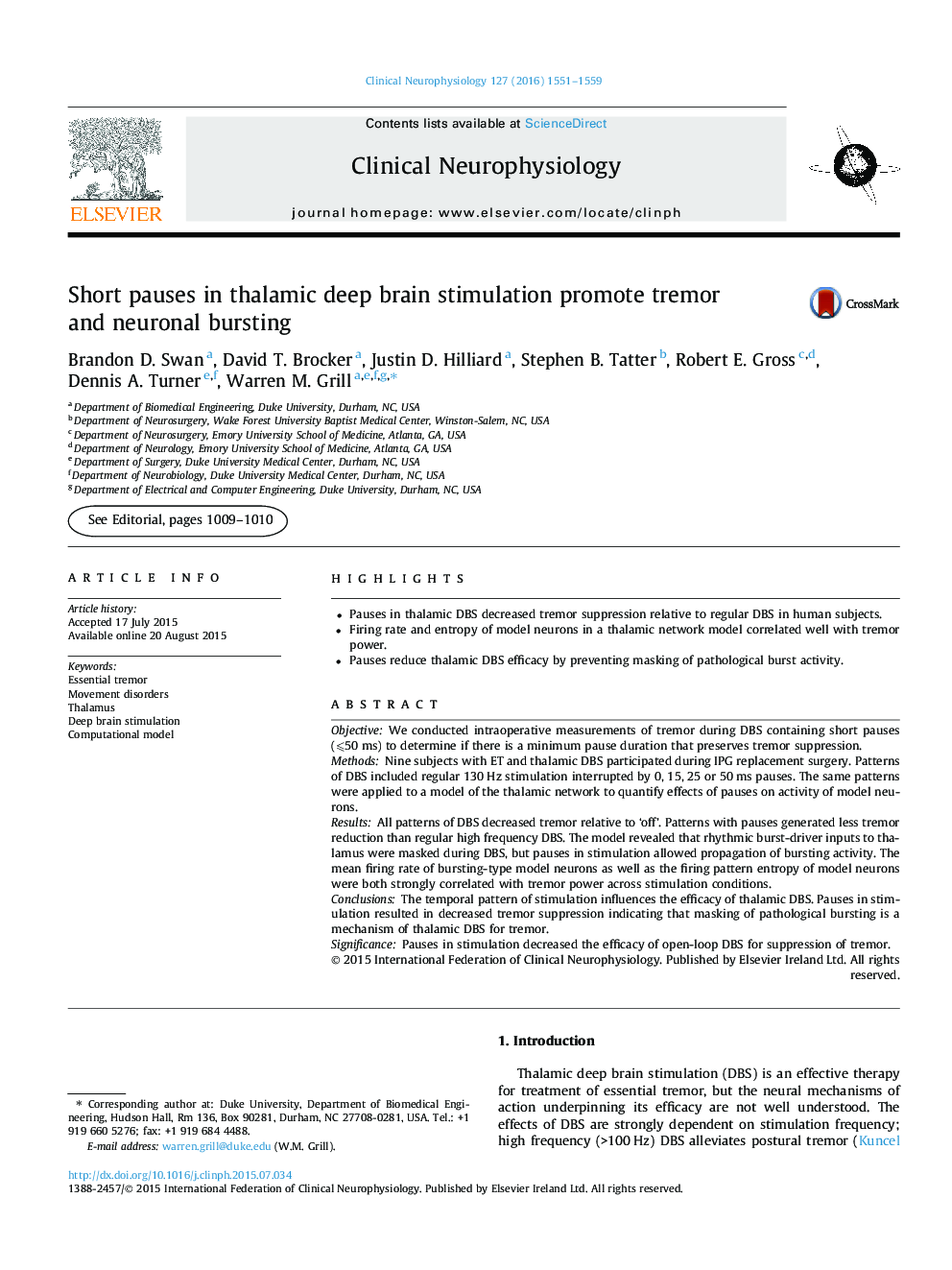| Article ID | Journal | Published Year | Pages | File Type |
|---|---|---|---|---|
| 6007652 | Clinical Neurophysiology | 2016 | 9 Pages |
â¢Pauses in thalamic DBS decreased tremor suppression relative to regular DBS in human subjects.â¢Firing rate and entropy of model neurons in a thalamic network model correlated well with tremor power.â¢Pauses reduce thalamic DBS efficacy by preventing masking of pathological burst activity.
ObjectiveWe conducted intraoperative measurements of tremor during DBS containing short pauses (⩽50 ms) to determine if there is a minimum pause duration that preserves tremor suppression.MethodsNine subjects with ET and thalamic DBS participated during IPG replacement surgery. Patterns of DBS included regular 130 Hz stimulation interrupted by 0, 15, 25 or 50 ms pauses. The same patterns were applied to a model of the thalamic network to quantify effects of pauses on activity of model neurons.ResultsAll patterns of DBS decreased tremor relative to 'off'. Patterns with pauses generated less tremor reduction than regular high frequency DBS. The model revealed that rhythmic burst-driver inputs to thalamus were masked during DBS, but pauses in stimulation allowed propagation of bursting activity. The mean firing rate of bursting-type model neurons as well as the firing pattern entropy of model neurons were both strongly correlated with tremor power across stimulation conditions.ConclusionsThe temporal pattern of stimulation influences the efficacy of thalamic DBS. Pauses in stimulation resulted in decreased tremor suppression indicating that masking of pathological bursting is a mechanism of thalamic DBS for tremor.SignificancePauses in stimulation decreased the efficacy of open-loop DBS for suppression of tremor.
